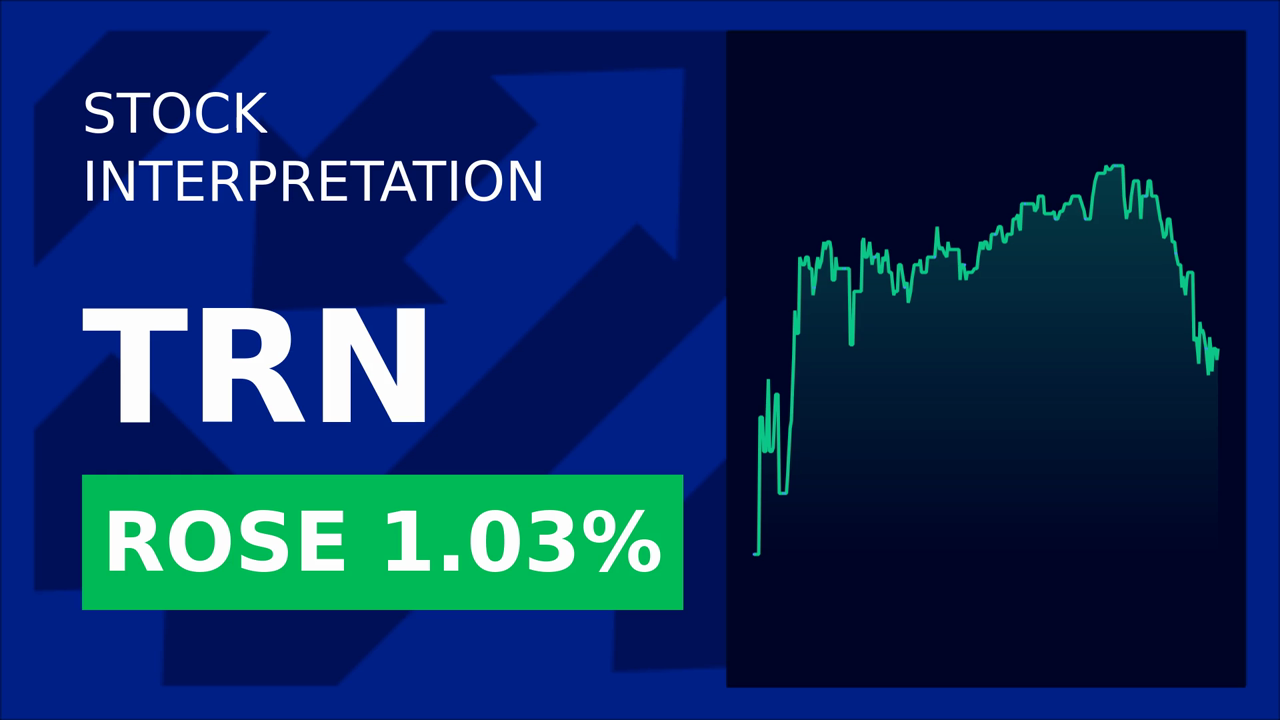Is Trinity Industries (TRN) a Hidden Gem in the Rail Sector?
Trinity Industries, Inc. (NYSE:TRN), a leader in railcar manufacturing, leasing, and logistics, has emerged as a compelling investment opportunity in early 2025. Despite near-term headwinds, its robust financial performance, dividend growth, and strategic focus on margin expansion suggest it could be a rare value play in an otherwise challenging industrial landscape. Let’s dissect whether now is the time to consider TRN.
A Resilient Business Model in a Cyclical Industry
Trinity’s results for 2024 underscore its ability to navigate cyclical downturns. The company reported a 32% rise in adjusted EPS to $1.82, driven by higher lease rates, improved railcar maintenance margins, and operational efficiencies. Its railcar leasing division, which accounts for roughly two-thirds of revenue, maintained a 97% fleet utilization rate—a key metric reflecting strong demand for its services. The Future Lease Rate Differential (FLRD), which measures the gap between current lease rates and expiring contracts, stood at +24.3%, signaling robust pricing power.

Despite these positives, TRN faces near-term risks. The railcar manufacturing segment faces a 20% drop in 2025 deliveries due to tariff uncertainty and delayed customer investments. This has pressured the company’s backlog, which fell to $2.1 billion from $3.2 billion in 2023. However, management has strategically shifted focus to retaining more railcars in its own lease fleet rather than selling to third parties, a move that could boost long-term recurring revenue.
Valuation and Dividend: A Compelling Combination
TRN’s valuation appears attractive relative to peers. With a P/E ratio of 15.11 (TTM), it trades at a discount to industry averages. For example, competitor Wabtec (WAB) sports a P/E of 28x, while Greenbrier (GBX) trades at 11.6x. This gap reflects investors’ concerns over TRN’s manufacturing exposure but also creates a margin of safety.
Moreover, the 4.73% dividend yield (as of early 2025) is among the highest in the sector. The dividend was recently raised to $0.30 per share, a 7% increase from 2023, signaling management’s confidence in cash flow stability. With a payout ratio of ~20% of 2024 EPS, there’s ample room for further hikes.
The Case for Long-Term Growth
Trinity’s strategy to reduce business cyclicality is paying off. By diversifying into logistics software (via RSI Logistics) and parts supply (Holden America), it has created cross-selling opportunities and recurring revenue streams. Management’s emphasis on operational efficiency—evident in the Rail Products Group’s 68% profit margin improvement in 2024—also positions the company to weather commodity price swings.
The rail sector’s long-term outlook remains favorable. Rising energy production, particularly in the Permian Basin, and the shift toward rail for bulk commodities (e.g., grain, chemicals) should sustain demand for TRN’s leased fleets. The company’s $300–$400 million annual investment in its lease fleet aligns with this thesis, as higher lease rates will drive predictable cash flows.
Risks and Challenges
- Tariff Uncertainty: Delays in resolving tariffs on steel and aluminum continue to hinder railcar demand. A prolonged standoff could further reduce deliveries.
- Margin Pressures: While 2024’s operational improvements were strong, rising labor or material costs could reverse gains.
- Competitive Dynamics: Competitors like GBX are expanding their leasing businesses, intensifying pricing competition.
Conclusion: A Buy for Patient Investors
Trinity Industries presents a compelling risk-reward profile. Its 4.7% dividend yield, undemanding valuation, and strategic shift toward higher-margin leasing businesses make it attractive for income-focused investors. Near-term risks are real, but the company’s strong balance sheet ($987 million in liquidity), FLRD-driven revenue visibility, and secular rail demand trends argue for a long-term hold.
Key data points reinforce this view:
- Adjusted ROE of 14.6% in 2024 exceeds its target range, signaling efficient capital use.
- $588 million in operating cash flow provides a solid foundation for dividends and fleet investments.
- The FLRD of +24.3% suggests lease rates will remain a growth engine even if manufacturing lags.
While TRN’s stock price dipped in early 2025, it remains +37% above its 52-week low and trades at a discount to peers. For investors willing to overlook short-term manufacturing headwinds, TRN could offer a rare blend of yield, stability, and upside in the rail sector.
In sum, Trinity Industries is more than a cyclical play—it’s a well-positioned operator in a critical infrastructure segment. With a disciplined capital strategy and a dividend that outshines most industrial peers, TRN deserves a place on the radar of patient investors seeking resilience in a volatile market.


_cbf086401749733332056.jpeg)







